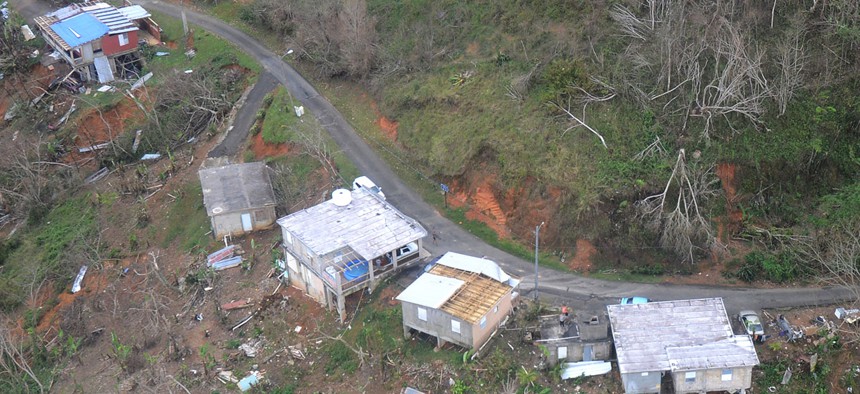Puerto Rico is Still a Disaster Zone, Three Weeks After Hurricane Maria
Twenty-eight hospitals are operating without electricity.
Hurricane Maria tore through Puerto Rico on Sept. 20. Three weeks later, many residents still live like it’s the day after the storm made landfall.
More than 90% of the island remains without electricity, and roughly a third without water service, according to local authorities. Nearly half of the US territory’s population is still unable to make calls, with cell and landline services still down. And in some areas, conditions are much worse than those figures suggest.
“What is projected over there is one thing and what is happening here is another,” the mayor of the mountainous municipality of Orcovis, Jesús Colón, told Puerto Rican newspaper El Nuevo Día (link in Spanish.) “They talk about percentages of electricity and water every day; I don’t see that percentage at all.”
Here’s a look at the situation in Puerto Rico, and why it’s been so hard to recover from the disaster.
Impassable roads
Road blockages remain a big problem in getting help to people in Puerto Rico’s interior, which means places like Orcovis. Only 400 miles of the territory’s 5,000 miles of roads are open, and they’re mostly in the outer ring of the island, according to the latest assessment from the Federal Emergency Management Agency.
Orcovis’s mayor Colón complains bureaucratic requirements and the lack of coordination between the federal and local agencies in charge of clearing the roads is slowing things down. “Given the state of emergency, they have to come up with a faster mechanism,” he said.
In the dark
If road repairs are moving slowly, restoration of the electric grid is going backwards. Just a few days ago, 11% of the electric utility’s customers had power. On Oct. 13, it was 9%. The hurricane knocked down big swaths of the island’s transmission line network. Turning the power back on in the parts of the grid that are still standing is a delicate task, as the Wall Street Journal (paywall) reports. A wrong move could make the whole system fail.
Road damage is another major hitch to getting lines back up. Just as they are blocking help, they are preventing workers from accessing downed towers and electricity posts.

No water
The lack of electricity is also complicating another crucial service: running water. Generators are being used to pump and treat water, but they rely on fuel, another rare commodity (see below.)
Yet, in some places, like the municipality of Comerío, no amount of fuel would solve the problem. Its mayor told Univisión on Oct. 10 that the water-waste treatment plant has collapsed, polluting the lake that supplies drinking water to the community. The water utility says restoring service will take months. Meanwhile, “there is no potable water in a single home in Comerío,” he said. He’s requesting water trucks to make home-by-home deliveries.
In places with bad roads, even that kind of stop-gap solution is iffy.
Health complications
Contaminated water is adding stress to Puerto Rico’s already overstretched healthcare system. There have been several cases of Leptospirosis, a bacterial disease spread through cattle urine that can result in death.
Out of the roughly 70 hospitals operating in the island, 28 are doing so without electricity, according to government figures.
Empty tanks
Without electricity, diesel has become the lifeblood of the island. Demand for the fuel has soared, and suppliers are struggling to fulfill it. Informal resellers are gouging prices (Spanish), and desperate Puerto Ricans are paying them—those who can afford it.



